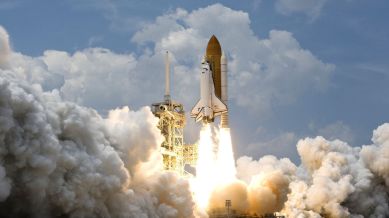An NOAA study has found that burnt-up rockets, satellites and other space junk is polluting the stratosphere. Scientists are not yet sure what consequences that will cause.

Scientists at the United States National Oceanic and Atmospheric Administration (NOAA) investigated the stratosphere, a layer of the atmosphere, and found that it is peppered with particles containing many different metals from satellites and used rocket boosters vapourised by the heat of re-entry.
They made the discovery using analysis of data collected by a high-altitude research plane that flew over the Arctic region for an NOAA mission called Stratospheric Aerosol Processes, Budget and Radiative Effects or SABRE in short.
You have exhausted your
monthly limit of free stories.
Read more stories for free
with an Express account.
Continue reading this and other premium stories with an Express subscription.
This premium article is free for now.
Register to read more free stories and access offers from partners.
Continue reading this and other premium stories with an Express subscription.
This content is exclusive for our subscribers.
Subscribe now to get unlimited access to The Indian Express exclusive and premium stories.
“Two of the most surprising elements we saw in these particles were niobium and hafnium. These are both rare elements that are not expected in the stratosphere. It was a mystery as to where these metals are coming from and how they’re ending up there,” said Daniel Murphy, lead author of a study on the pollution published in the journal Proceedings of the National Academy of Sciencesin a press statement.
These elements, niobium and hafnium, do not exist as free elements in nature. They are used in superalloys and semiconductors and have to be refined from mineral ores.
Most Read
Apart from these two rather rare and unusual elements, a large number of particles found in the stratosphere contained copper, lithium and aluminium at concentrations that are far higher than can be found in “natural space dust.” “The combination of aluminium and copper, plus niobium and hafnium, which are used in heat-resistant, high-performance alloys, pointed us to the aerospace industry,’’ explained Murphy.
The scientists estimate that up to 10 per cent of the stratospheric sulphuric acid particles contain traces of metals from rockets and satellites. But they believe that it could grow to more than 50 per cent as space traffic grows. Also, space agencies and private companies around the world are ramping up efforts to reduce space debris by burning it up in the atmosphere.
While all of that could increase the amount of metal pollution in the stratosphere, it is still not clear what the effects of that pollution will be. “There will be a lot of work to understand the implications of these novel metals in the stratosphere,” concluded Murphy.
© IE Online Media Services Pvt Ltd
First published on: 25-10-2023 at 12:49 IST





